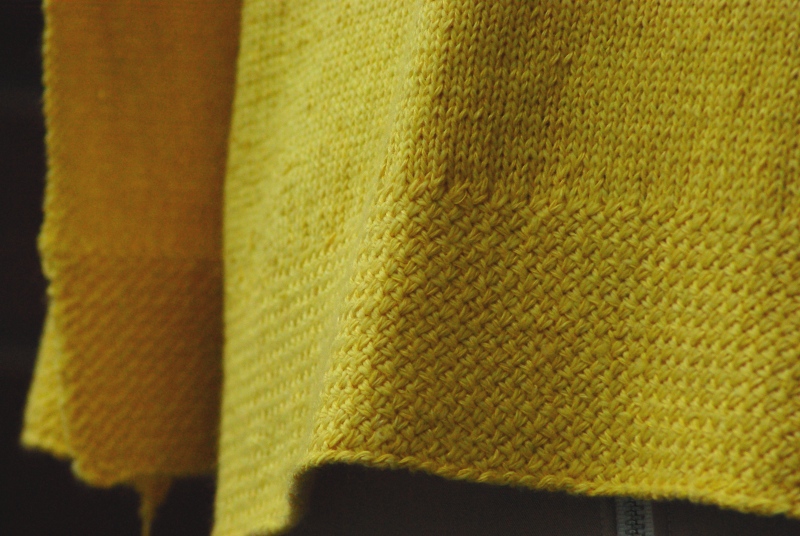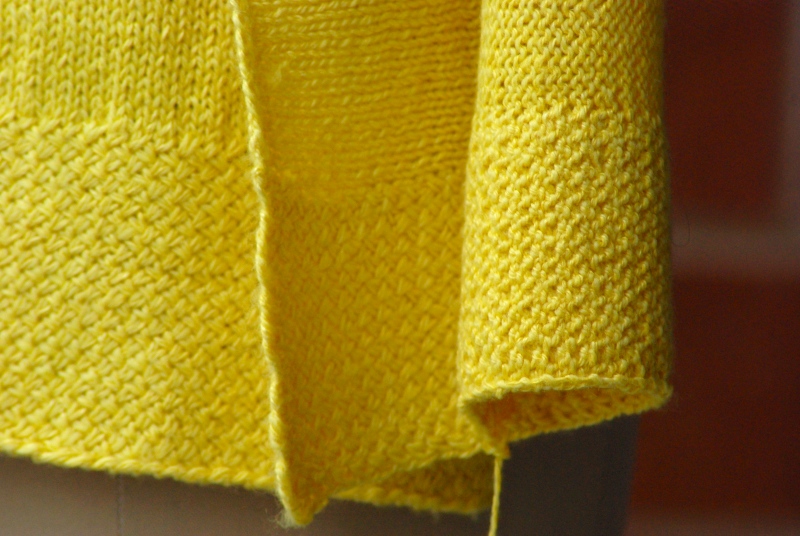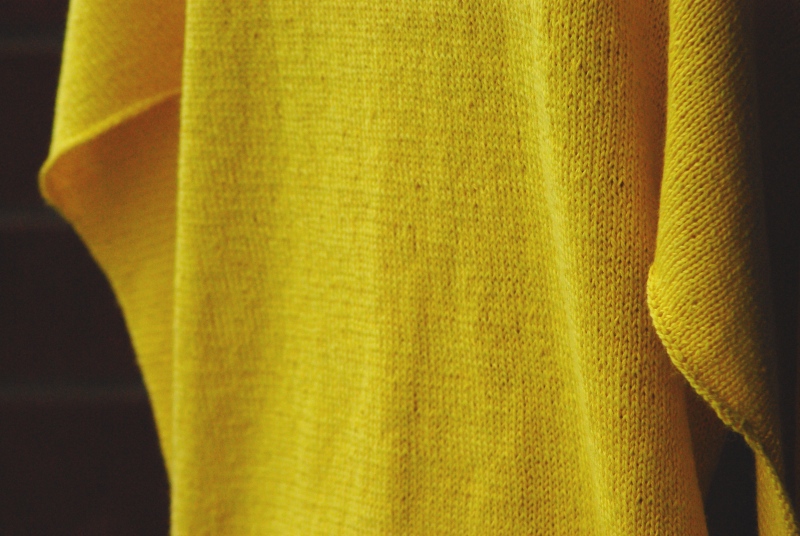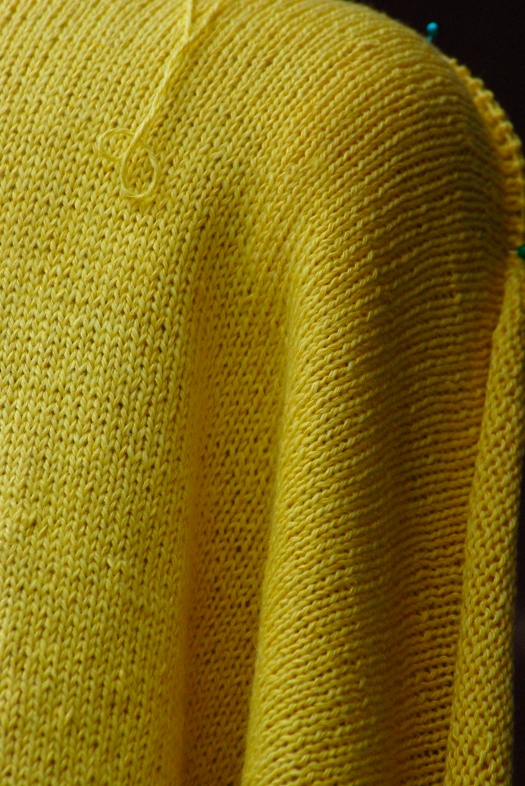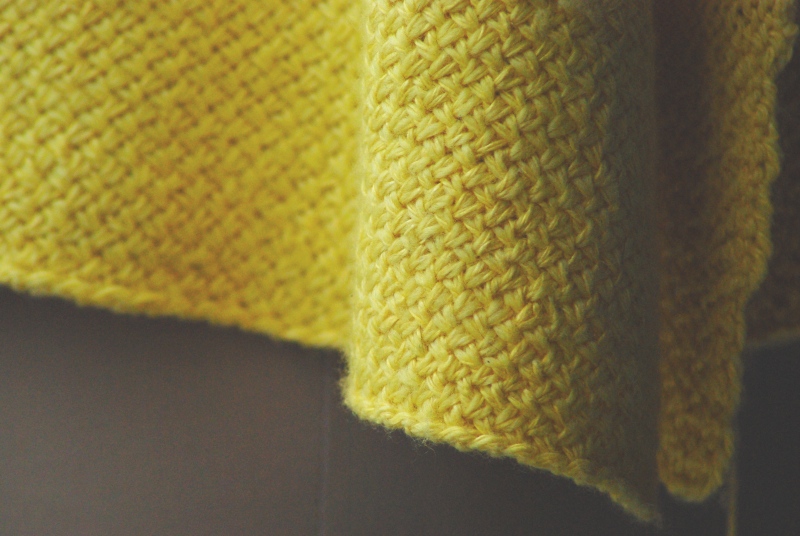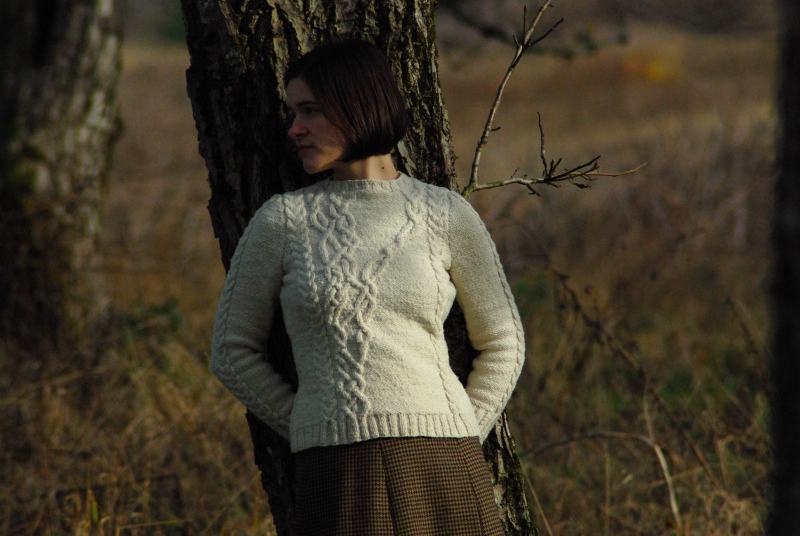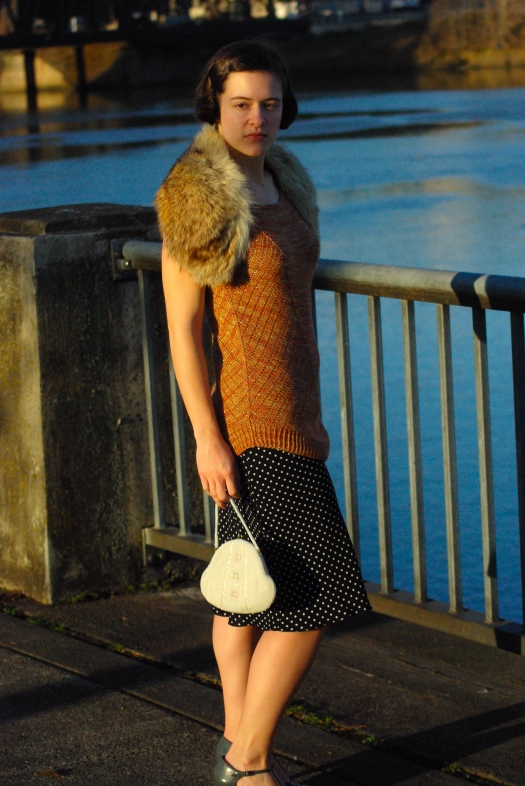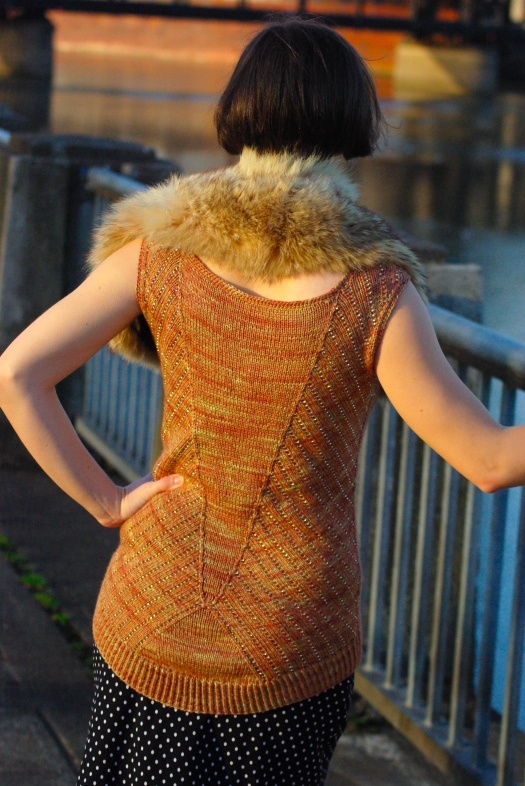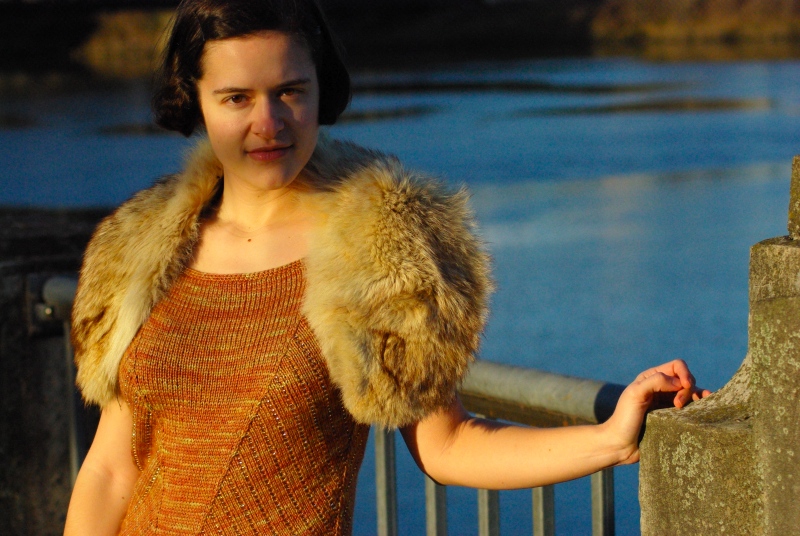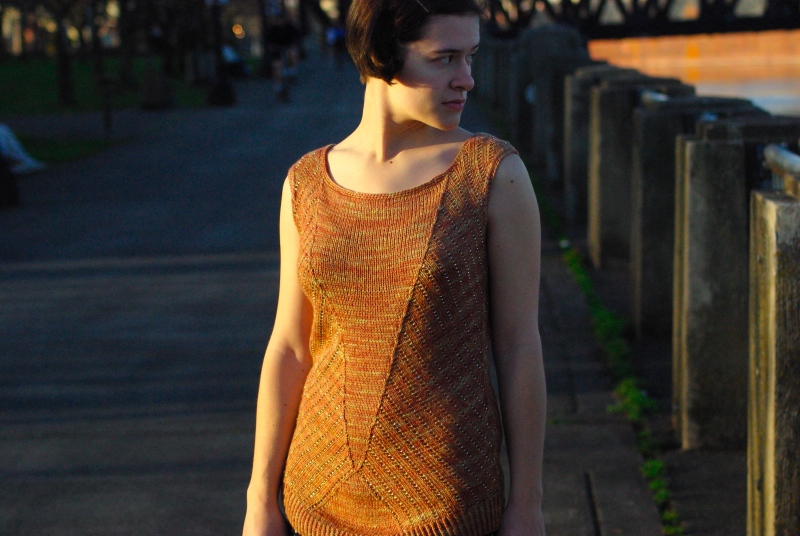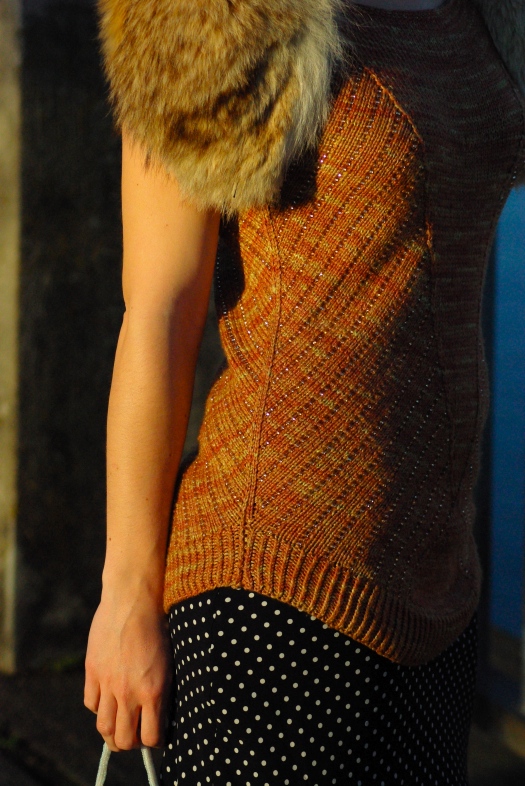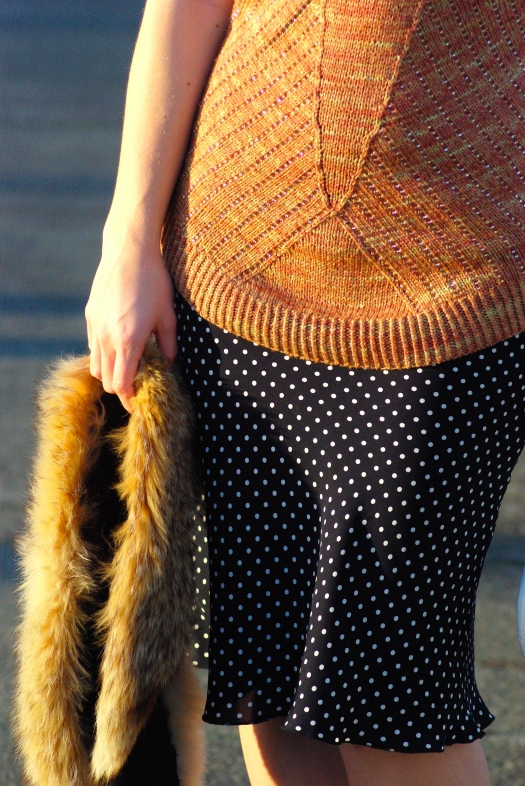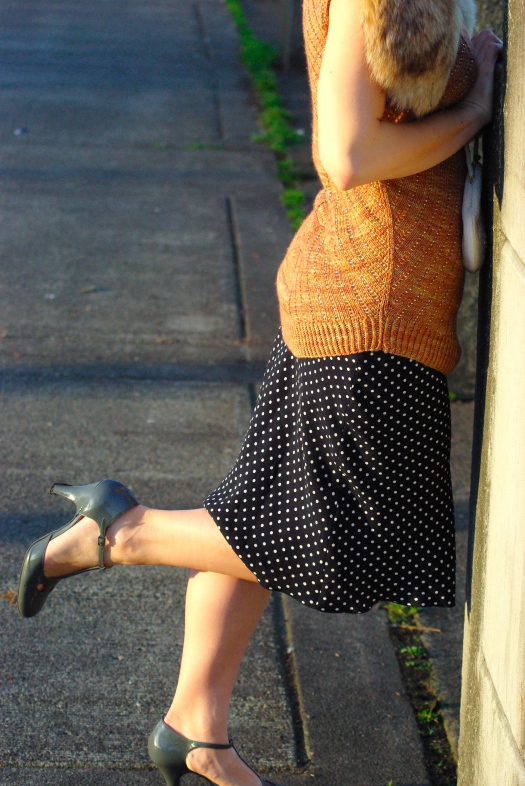Thanks so much for all the nice comments on Maxine! She's off to the test-knitters, so hopefully I'll receive some solid feedback and get the pattern to you in a timely fashion. Ethel, by the way is about this close to release. The test-knitters on that project were amazing, and I want to give a special shout-out to Maria. She was so generous with her time and energy, even taking out the graph paper herself when necessary to see where a problem was hiding, and winningly enthusiastic from start to finish. Maria, you rock. And the rest of the test-knitters: you rock, too.
So, on to business. I apologize in advance for the long, photo-less post today, but I'm really curious about all your opinions on something. There are some amazing artists and craftspeople who comment here (and I know there are more of you lurking!), and I'm interested in your judgment. So here goes.
I've known about things like National Novel Writing Month and its many takeoffs for some time, and, while they're definitely not for me, they seem like a fun thing for people who have a hard time motivating themselves actually to sit down and write (and who thrive in an atmosphere of community and adrenalin). Spend a month frantically writing a novel, and decide at the end of the month whether what you've produced is worth refining, or whether it was a fun exercise that constituted its own reward. But lately I've been noticing some things that seem at once sillier and more culturally worrisome. Well, maybe by "culturally worrisome" I really mean "personally annoying." I'm having a hard time telling the difference right now, which is where you all come in.
First up is Write or Die, which describes itself as "a web application that encourages writing by punishing the tendency to avoid writing. Start typing in the box. As long as you keep typing, you're fine, but once you stop typing, you have a grace period of a certain number of seconds and then there are consequences." Said "consequences" range from a little flashing box that reminds you to keep writing, to "kamikaze mode," in which your prose actually begins un-writing itself when the grace period elapses.
I know that Write or Die is mostly a joke, and if it's a useful tool for some people, who am I to complain? I also agree with the basic assumption that doing a lot of something - just practicing, without worrying about perfection as you practice - is a great way to improve. But I guess I'm seeing so much focus on the initial stage of creative production - the vomiting-it-out stage, so to speak - that the latter stages of editing, refining, ripping-out-and-re-knitting, are being neglected. One hardly ever hears, for example, about communities of people getting together for editing parties.
I actually think the knitting community is ahead of the game in this regard, because the luminaries of our field tend to stress the importance both of swatching beforehand, and ripping back when we've made a mistake that's going to bug us, or when a project just isn't living up to our expectations. There is also a lot of talk about putting things away for a while; I can't count the number of times in a Ravelry forum where a knitter has just discovered a heartbreaking mistake in a piece of knitting, and his compatriots advise taking a break, putting it away and letting it marinate for a while, giving the frustration and disappointment time to dissipate. This strikes me as incredibly wise, despite my own tendency to just rip out immediately and fix the problem (but I've had a lot of practice at detachment). Write or Die, on the other hand, doesn't give the writer time to stop and breathe, to re-read what she's written and make a change here or there, to recapture the flow of the narrative or just take stock of her direction. It's adrenalin/punishment-based, and while that's fine for a crazy weekend-long productivity-party, or even a month of novel-writing, it strikes me as a totally unsustainable way to live one's life in the long term.
In the same vein, Boing Boing today linked to Bre Pettis and Kio Stark's Cult of Done Manifesto, which goes thusly:
1. There are three states of being. Not knowing, action and completion.
2. Accept that everything is a draft. It helps to get it done.
3. There is no editing stage.
4. Pretending you know what you're doing is almost the same as knowing what you are doing, so just accept that you know what you're doing even if you don't and do it.
5. Banish procrastination. If you wait more than a week to get an idea done, abandon it.
6. The point of being done is not to finish but to get other things done.
7. Once you're done you can throw it away.
8. Laugh at perfection. It's boring and keeps you from being done.
9. People without dirty hands are wrong. Doing something makes you right.
10. Failure counts as done. So do mistakes.
11. Destruction is a variant of done.
12. If you have an idea and publish it on the internet, that counts as a ghost of done.
13. Done is the engine of more.
There are certain items on this list with which I strongly agree, even if I dislike their phrasing. "Laugh at perfection," for example, I find a very useful thing to keep in mind in any creative process. "Accept that everything is a draft" and "Failure counts as done. So do mistakes" both point to a process-based approach that I definitely appreciate. But "There is no editing stage"? "Once you're done you can throw it away"? And, most especially, "If you wait more than a week to get an idea done, abandon it"? To me, this list paints a picture of a frantic race to get something - anything - finished, without pausing to conceptualize, plan, or savor the process. Slapping something together because you want to get as much "done" as possible, viewing the germination process as nothing other than procrastination - it smacks of the desire for instant gratification. It's probably obvious by this point in my entry that this vision is not attractive to me. In its attempt to motivate people into accomplishing something, it veers wildly to an extreme, and fails to consider elements like careful craftsmanship, reflection, or pride in doing a job well, rather than simply doing it to have it done.
Perfectionistic procrastination versus slapdash, shoddy construction: it's truly a hard line to walk. And I suspect that to a certain extent, this is all a matter of semantics. Some people find the initial motivation and raw-material-production to be the most difficult part of the artistic process, so they want to stress the idea of just sitting down and getting something done. Other people find themselves drowning in piles of raw product, so they tend to stress the importance of the editing and refining process, separating the wheat from the chaff. But both groups, I think, should attempt to acknowledge the reasons for stressing what they do. Otherwise, the readers of lists like the above get a radically skewed picture of the process.
Sure, it's counter-productive to obsess on the same story/garment/project forever, removing and replacing a single semicolon all afternoon, or erasing and re-drawing a neckline until you wear a hole through your sketch paper. There's a point at which one should just dive in and give something a try. But I don't see why that means that we need to discount the other parts of the creative process. There is a time for spewing forth unedited product, and there is a time for going through that product in search of gems (or, if you prefer, a time for just casting on, and a time for finessing those decreases to transition seamlessly into the twisted-stitch motif). I would even argue that there is also a time for dreaming about projects of the future, and accumulating ideas to put in the mental warehouse for later. Seriously, if I had abandoned every project idea that didn't materialize within a WEEK? There would be very slim pickin's on this site. What am I saying? There would be no site.
Here's the thing: I got good at knitting through lots of practice, through LOTS of ripping out and re-knitting, making mistakes and fixing them, experimenting and tweaking. But I do all that knitting because it's something I love. Because at the end of the day, I really enjoy sitting down with needles and yarn, and figuring out a design problem or watching a stitch pattern emerge. I love working with fiber; I love the various properties of different yarns. I genuinely enjoy seeking out and learning new techniques. And even if I can't honestly claim to enjoy ripping out an entire sweater front after it's already seamed or cutting off a felted waistband and grafting a new one in its place, it's immensely satisfying to end up with a garment that lives up to my initial vision. I don't always feel like doing the sizing on a pattern's set-in sleeves, or tracking down a math error in my spreadsheet. But when I think about the wider context of the project, I never have too much trouble motivating myself, and when I do those things I'm working out of love, not out of fear or adrenalin-panic. Moreover, doing this stuff is part and parcel of my daily routine. I'm just USED to working on art. I've done it every day, so I do it every day.
I know that my experience is not universal nor my process for everyone, and I don't mean to sound smug or self-congratulatory. I don't intend to claim that everyone should work like I work. But I have to wonder why so many people seem drawn to these extreme motivational methods and outlooks. Have we as a culture lost the ability to think contextually, and do the less exciting things for the sake of the more exciting? Can we not institute a daily routine of writing or art-creation without going to extremes? Is there some reason we no longer want to set reasonable, sustainable goals, but are drawn instead to adrenalin-pumping mad dashes to meet a seemingly impossible quota? And why is this lack of motivation so prevalent? Are we in love with the idea of art creation instead of the reality, enamored of "being a writer" rather than the texture of words and phrases? Is there nothing we love well enough to do it well, for its own sake? Or am I just wildly overreacting to what are essentially two jokes on the internet?
I welcome your thoughts on any of these pressing questions. The next entry will return to your regularly scheduled Family Trunk programming.
